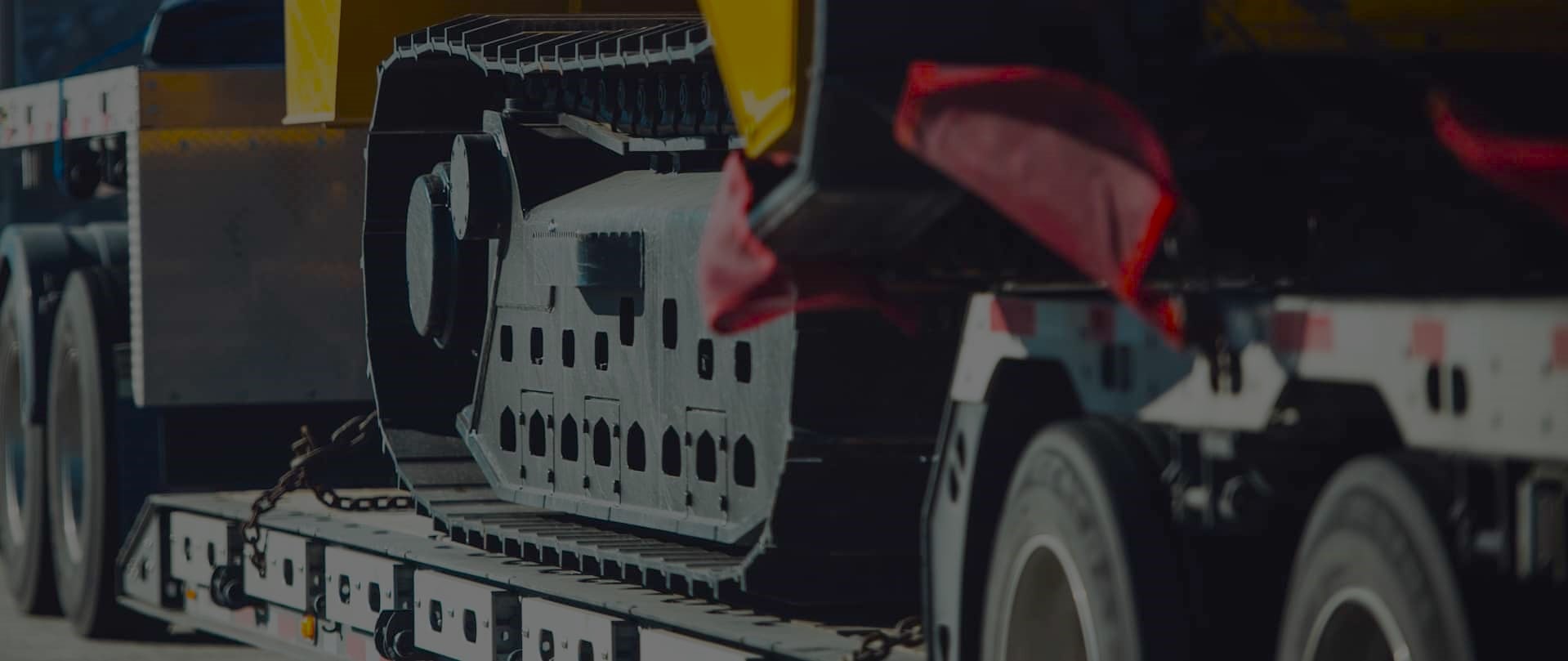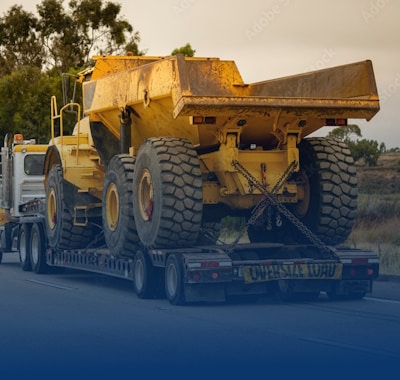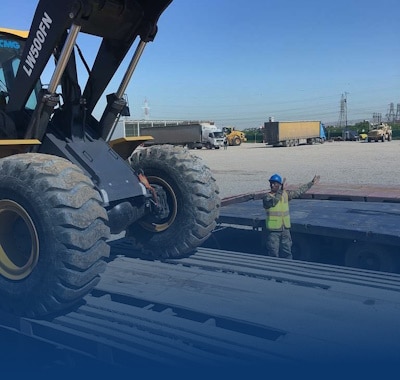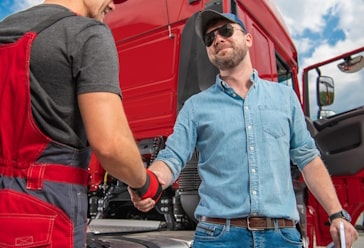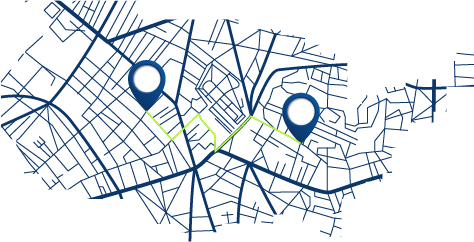Transporting Oversized Helicopters and Planes Securely
Freedom Heavy Haul can offer expedited Pickup and Delivery for any size shipment anywhere in the USA. Contact us today for No Hassle, No Pressure Pricing.
Transporting big helicopters and planes needs a lot of skill and care. These huge machines are very heavy and can harm the environment. To move them safely, special tools and careful planning are used.
Companies like Heavy Haulers face many challenges. They have to deal with rules, permits, and international laws. They use special ways to keep aircraft parts safe during transport.
Safe transport of planes and helicopters depends on skilled teams and strict rules. This guide will show you how to move these big machines safely. You’ll learn about the tools, methods, and laws used to protect your valuable assets.
Understanding the Complexities of Aircraft Transportation
Transporting helicopters and planes is a precise task. Every detail is important, from getting permits to picking the right gear. Let’s look at the main challenges professionals face.
Common Challenges in Moving Large Aircraft
Moving big aircraft needs careful planning. Some common problems include:
- Airspace coordination: Heavy lift air transport often needs to reroute commercial flights.
- Infrastructure limitations: Bridges, tunnels, and roads may need to be strengthened for oversized cargo logistics.
- Regulatory compliance: Cross-border air freight shipping means dealing with many aviation authorities.
Size and Weight Considerations
A Boeing 747’s wingspan is over 210 feet, and an Antonov An-124 can carry over 150 tons. These sizes affect:
- The choice of transport method (road, sea, or air).
- The need for special trailers or reinforced cargo planes.
- Planning routes to avoid low-clearance zones.
Environmental Impact Factors
Sustainability is key in modern air freight shipping. Important issues include:
| Factor | Impact | Mitigation Strategy |
|---|---|---|
| Fuel Consumption | High for heavy lift air transport | Optimized flight paths |
| Noise Pollution | Affects communities near airports | Nighttime flight restrictions |
| Carbon Emissions | Contributes to climate change | Use of biofuels or hybrid engines |
Efficiency and eco-friendly practices are balanced in oversized cargo logistics. Working with certified providers reduces risks and environmental impact.
Professional Equipment Required for Safe Transport
Moving big helicopters and planes needs special tools. These tools include heavy-lift cranes, strong rigging systems, and trailers made for heavy loads. For example, Sikorsky’s S-64 Skycrane uses special sling-load tech to lift other planes safely. This tech helps solve problems like taking apart rotors or protecting the plane’s body.
- Adaptive loading systems: Boeing’s variable-geometry trailers adjust to different aircraft sizes.
- Anti-vibration platforms: These platforms help reduce stress on the plane during transport.
- Climate-controlled containers: These containers keep sensitive plane parts safe during travel.
“Aircraft delivery services thrive on tailored equipment. Without shock-absorbent transport frames or laser-guided alignment tools, moving a Chinook helicopter becomes a high-risk gamble.”
— Logistics Director, Volga-Dnepr Group
Top aircraft delivery services use the latest tech. They have GPS sensors that track the plane’s tilt, temperature, and pressure. This tech warns the crew of any dangers. Companies like Airbus Partner Network use hydraulic ramps and self-leveling decks to make loading easier. This cuts down on manual handling and avoids costly delays.
Safety also comes from working with trusted partners. Companies like Lockheed Martin test equipment with the FAA. From strong tie-down straps to protectors for the plane’s engine, every detail matters. Using certified tools is not just a choice—it’s essential for safe plane transport.
Methods of Transporting Large Helicopters and Aircraft
Getting helicopters and planes from one place to another needs careful planning. It’s all about keeping things safe, affordable, and efficient. The right choice depends on the size of the cargo, the route, and the weather. Here are the top ways to move them.
Ground Transportation Options
For trips that aren’t too long, driving is a good option. Special trucks with strong frames and shock absorbers carry the heavy loads. Companies like FedEx Custom Critical and Emmert International break down planes into parts for easier travel. They consider things like getting the right permits and checking the route for obstacles.
- Permit approvals for wide or tall loads
- Route surveys for bridges and tunnels
- Real-time GPS tracking
Maritime Shipping Solutions
For trips across oceans, shipping by sea is often cheaper and can handle big loads. Ships designed for carrying cars or special containers keep planes safe from saltwater. Companies like Maersk and COSCO have special holds for delicate parts. This method is good for moving big helicopters around the world but takes longer because of port schedules.
Air-ride Transportation Systems
These systems use air to cushion the cargo, reducing shaking during transport. Companies like Goldhofer and Scheuerle make trailers with this technology. They’re great for moving sensitive or valuable items, like old planes or military helicopters. The systems have sensors to keep everything stable and safe.
| Method | Best For | Key Features | Example Brands |
|---|---|---|---|
| Ground | Domestic routes | Modular trailers, permits | Emmert, FedEx |
| Maritime | Overseas transport | RoRo vessels, containers | Maersk, COSCO |
| Air-ride | Fragile equipment | Pneumatic suspension | Goldhofer, Scheuerle |
Safety Protocols and Best Practices
Transporting helicopters and planes is more than just moving them. It’s about doing it safely every step of the way. Whether using air freight shipping or ground-based aircraft transportation, strict safety protocols prevent costly delays and damage. Teams focus on three key areas: equipment reliability, crew expertise, and real-time risk management.
Regular equipment maintenance is a must. Hydraulic lifts, aircraft towbars, and cargo straps get daily checks. Companies like FedEx Custom Critical use sensor-based systems to track wear and tear. Trained technicians log every adjustment, ensuring tools meet aviation-grade standards before each job.
“Every flight begins on the ground. Proper protocols in air freight shipping ensure that even grounded aircraft stay protected.”
Crews handling aircraft transportation go through rigorous certifications. The International Air Transport Association (IATA) requires courses on load balancing, emergency response, and hazardous material handling. Teams practice scenarios like engine disassembly and rotor blade stabilization monthly.
- Monitor weather using NOAA updates or tools like Weather Underground.
- Secure permits for restricted airspace or oversized cargo routes.
- Use GPS trackers to monitor vibrations during transit.
| Safety Protocol | Key Implementation Steps | Industry Leaders |
|---|---|---|
| Equipment Checks | Daily inspections, sensor alerts | FedEx, UPS Airlines |
| Crew Training | IATA certifications, drills | Atlas Air, Boeing |
| Weather Monitoring | Real-time radar tracking | NOAA, Weather Underground |
| Regulatory Compliance | Permit applications, audits | DHL, Cargolux |
By following these practices, risks in air freight shipping are greatly reduced. Working with certified providers ensures your project meets global standards. This keeps your aircraft transportation project on time and safe.
Regulatory Compliance and Documentation Requirements
Transporting oversized aircraft needs strict rules. Whether it’s heavy lift air transport or specialized helicopter transport, the right documents are key. Without them, you could face delays or legal issues.
International Transport Regulations
When moving across borders, you must follow global rules. For instance:
- Heavy cargo must meet ICAO Annex 6 standards for safety.
- In the EU, EASA Part-CAT rules apply for helicopter transport.
- The U.S. FAA requires special approvals for oversized aircraft.
“Compliance isn’t optional—it’s the backbone of safe global aviation logistics.” — ICAO Guidance Manual
Required Permits and Licenses
Every place has its own rules. You’ll need:
- Permits for oversized loads on the ground.
- Airspace clearances for air transport.
- Customs bonds for importing or exporting aircraft parts.
Insurance Requirements
Insurance is vital for protection. It covers damage, liability, and unexpected events. Policies for helicopter transport include:
- Coverage for damage during transport.
- Liability insurance over $10 million for international flights.
- Insurance for weather or political issues.
| Region | Key Regulations | Required Permits |
|---|---|---|
| United States | FAA Part 375, DOT Oversize Rules | FAA Form 7711-2, State Highway Permits |
| European Union | EASA Part-CAT, EU Air Freight Directives | ECAA Overflight Authorization |
| Asia-Pacific | ASEAN Air Transport Agreement | APAC Cargo Security Clearance |
Working with certified companies like DHL Aviation or Volga-Dnepr Group helps. They know the rules for heavy lift air transport. This lets you focus on your mission.
Route Planning and Logistics Management
Efficient aircraft delivery services need careful route planning. They start by checking road conditions, bridge limits, and airspace rules. For big cargo, teams get permits early and work with local officials to avoid delays.
They use tools like real-time weather tracking and GPS to adjust routes as needed.
Key steps in successful logistics management include:
- Mapping alternative routes for unexpected closures
- Inspecting infrastructure like tunnels and power lines
- Collaborating with pilot car operators for clearance
“Route planning isn’t just about distance—it’s about anticipating challenges before they happen,” notes a FedEx Custom Critical logistics manager.
DHL Industrial Projects uses special software to plan transports. This helps avoid risks like tight turns or low bridges. It also saves fuel and protects the aircraft.
They choose routes that are good for the environment too. This helps meet global sustainability goals.
| Factor | Consideration | Impact |
|---|---|---|
| Permits | Local, state, and international approvals | Avoids legal penalties |
| Weather | Wind, rain, and temperature thresholds | Ensures cargo stability |
| Infrastructure | Bridge weight limits, road widths | Prevents route blockages |
| Contingency Plans | Backup routes, emergency contacts | Reduces downtime |
By combining aircraft delivery with cargo logistics, companies make transport smoother. This keeps projects on track and protects valuable assets.
Cost Factors in Aircraft Transportation
Transporting oversized helicopters and planes is a balance between safety and budget. Costs change based on distance, equipment, and risk. Knowing these factors helps in spending wisely and ensuring safe delivery.
Distance and Route Considerations
Longer routes need more fuel, permits, and planning. Air freight costs more for international trips due to customs and airspace rules. Remote areas may need special ground support, raising costs.
Challenging terrain or weather can also increase expenses.
Equipment and Personnel Expenses
Heavy aircraft transport needs cranes, strong trailers, and air-ride systems. Skilled operators are key for loading and securing. Teams include pilots, engineers, and logistics coordinators, adding to labor costs.
Special tools like rotor-blade crates or climate-controlled containers also affect prices.
| Cost Factor | Average % of Total | Key Influencers |
|---|---|---|
| Distance | 35-50% | Fuel, permits, tolls |
| Equipment | 25-40% | Trailer type, crane rentals |
| Insurance | 10-20% | Aircraft value, route risk |
| Personnel | 15-25% | Team size, expertise |
Insurance and Liability Costs
Insurance costs depend on aircraft value and transport method. Policies cover damage, third-party liability, and cargo delays. Helicopter hauling services with good safety records may have lower premiums. Always check coverage for mechanical failures or environmental hazards.
Pro tip: Ask for detailed quotes to compare costs. This helps in finding areas to negotiate, like bulk discounts or seasonal rate changes.
Choosing a Specialized Transport Provider
Finding the right partner for moving helicopters or oversized aircraft is key. They need to know a lot about the technical side, follow all the rules, and be very careful with the details. This way, the aircraft will arrive safely and on time.
Key Qualifications to Look For
Look for providers with:
- Valid certifications from aviation authorities like the FAA or EASA
- Customized equipment for securing rotor blades or fuselage components
- Comprehensive insurance covering transit risks
- Trained personnel skilled in handling fragile or irregularly shaped cargo
Experience and Track Record
Providers with a good track record will share stories of their success. They should have experience with aircraft that are similar in size and complexity to yours. Companies like Babcock International or Erickson Incorporated have a lot of experience in moving big and heavy aircraft.
Safety Certifications
Certifications show that a provider follows global safety standards. Make sure your provider has the latest:
| Certification | Issuing Body | Coverage |
|---|---|---|
| ISO 9001:2015 | International Organization for Standardization | Quality management systems |
| FAA Part 133 | Federal Aviation Administration | External load operations |
| TC OOC | Transport Canada | Oversize/overweight cargo permits |
Working with certified experts reduces risks and makes sure you follow aviation laws everywhere.
Ensuring Your Aircraft’s Safe Journey from Start to Finish
Transporting oversized helicopters and planes needs careful planning at every step. Working with reliable helicopter transport services is key. They make sure every detail meets safety standards. From planning the route to delivering the aircraft, each choice matters.
Good aircraft transportation starts with detailed planning. Teams must figure out the aircraft’s weight, get the right permits, and talk to local authorities. They use advanced tracking and shock-absorbing gear to reduce risks. Regular checks keep everything clear and on track.
Choosing experts in helicopter transport means following global rules like FAA or IATA. These pros handle unexpected issues, like weather or route changes, safely. Their know-how cuts down on delays and costs.
Good communication between clients and transport teams builds trust. Keeping everyone updated and solving problems early avoids big mistakes. Clear records, including insurance and inspection reports, keep everyone in the loop.
Putting safety first in aircraft transport protects your investment and keeps things running smoothly. With careful planning, certified partners, and the latest tech, oversized aircraft arrive safely. Follow these steps for a successful transport project.
